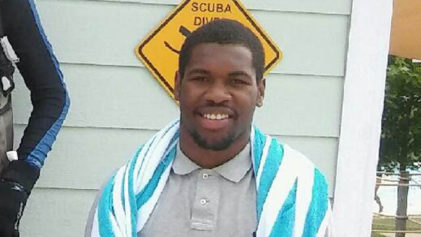SACRAMENTO, Calif. (AP) — A measure that would make California unique in restricting when police officers can use deadly force is getting renewed attention and additional support after a prosecutor said Sacramento police broke no laws when they fatally shot an unarmed black man suspected of vandalism last year.
Sacramento Mayor Darrell Steinberg understood the reasoning behind the decision announced over the weekend but afterward said he supports changing the law.
“The current hundred-year-old standard defining officer-involved shootings needs to change,” the former the state Senate president said. “I do not know if a ‘prevention’ standard would have changed this particular outcome. But I want to change future outcomes.”
Two officers shot and killed Stephon Clark, 22, last March following a chase that ended in his grandparents’ backyard, prompting angry protests in California’s capital city and beyond. The officers still could be prosecuted, with state Attorney General Xavier Becerra also investigating and announcing soon whether to file charges.
Lawmakers have revived a measure first introduced after Clark’s slaying that would make California the first state to allow police to use deadly force only when it’s necessary to prevent imminent and serious injury or death and if there’s no reasonable alternative, such as warnings, verbal persuasion or other methods.
Gov. Gavin Newsom, Senate President Tony Atkins and Assembly Speaker Anthony Rendon, all Democrats, have called for changes but haven’t endorsed a specific plan.
The legislation stalled last year amid opposition from law enforcement agencies that fear it would open police to criminal convictions for defending themselves in dangerous situations, make them hesitate at crucial times and discourage some would-be officers from joining the force.
It’s not clear the measure will pass this year, particularly because police associations are offering a less sweeping alternative that would keep the current legal standard but calls for more training and an emphasis on trying to calm suspects.
Plumas County Sheriff’s Deputy Ed Obayashi said the proposed legal change is likely to be interpreted the same way as the current standard. Now, officers can use deadly force if they have a “reasonable fear” that a suspect could inflict harm on them or the public.
“When it gets into court, it’s going to be interpreted to mean the same thing,” said Obayashi, who teaches officers statewide about use of force. “Of course we’re only shooting when it’s necessary. This whole terminology — it’s destined for failure in my world.”
Many police forces nationwide, including Sacramento, started using body cameras in hopes they will help defuse confrontations and adopted more restrictive policies on chasing suspects.
Tougher standards and training have reduced fatal shootings by police in cities including Seattle and New York, legal experts said Monday. Yet they said imposing a statewide standard may be counterproductive because the only way to affect real change is to have officers adopt a different mindset that makes gunfire a last resort.
“The key issues are not criminal prosecution standards but rules and incentives that police administration provides — what my book calls ‘don’t shoot’ and ‘stop shooting’ rules and values,” said Franklin Zimring, University of California, Berkeley, law professor and author of “When Police Kill.”
He and Eugene O’Donnell, a use-of-force expert at New York’s John Jay College of Criminal Justice, praised the New York City Police Department’s policies, training and oversight.
“I think it’s a point of pride for NYPD that they do preserve life,” O’Donnell said. “If you want to paraphrase their shooting policy, it’s ‘don’t shoot ever’ and work from there.”
The NYPD’s policy, stricter than state law, allows deadly force only to “protect members of the service and/or the public from imminent serious physical injury or death.” It rules out, for instance, using deadly force to protect property.
In Seattle, new training and policies led to at least a 60 percent drop in how often officers use serious force, with no rise in crime or officer injuries. They include new de-escalation and crisis-intervention techniques, investigating uses of force and spotting officers who consistently overuse force.
The San Francisco Police Department is the best example in California, though no data is available yet on whether new policies are having an effect, said American Civil Liberties Union legislative advocate Lizzie Buchen, whose organization is among the groups backing statewide changes. The department is among those that now require officers to try de-escalation and use deadly force only when there are no reasonable alternatives.
Buchen faulted the Sacramento officers for escalating the confrontation with Clark during an initially low-key neighborhood search for a man who broke three vehicle windows and a sliding glass patio door.
Initial reports didn’t say Clark could be armed, but an officer drew his gun before approaching Clark, then chased him down a driveway and into the darkened yard. The officers quickly rounded the corner of the house and mistakenly thought they saw a muzzle flash as Clark moved toward them, so they opened fire, according to body camera videos and prosecutors’ investigation.
Clark was found to be holding only a cellphone.
Other agencies’ de-escalation policies and training would have required the officers to stop and use the corner of the house as protective cover while they assessed the danger, Buchen said.
“Here, that additional time might have meant they didn’t mistake Clark’s phone for a gun,” she said.
The officers also shot him seven times, including after he fell to the ground, while Buchen said officers should be trained to fire two to three shots before reassessing the danger.

